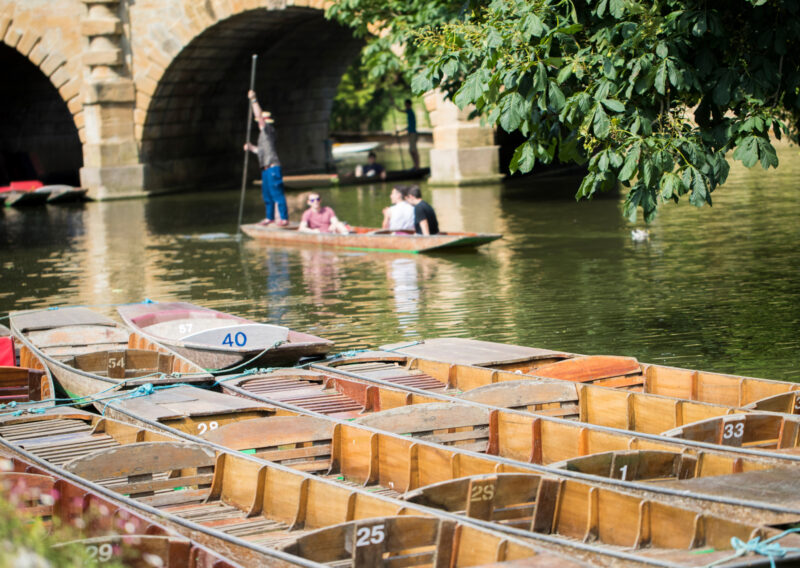In January 1873, Jules Verne’s classic adventure story Around the World in 80 Days was published in a single volume for the first time.
Previously serialised in Le Temps, the story would later take its place among Verne’s eminently readable 54-novel collection Extraordinary Voyages.
As it turns 150, Around the World in 80 Days remains one of Verne’s most enduring works, inspiring films, BBC dramas, and an animated children’s series. The novel continues to capture readers’ hearts and imaginations.
In honour of this milestone birthday, keep reading to follow in the footsteps of Verne’s legendary adventurer through seven globe-spanning countries. Tracking Fogg’s original route, you’ll discover some classics of world literature perfect for gifting this Christmas.
1. Germinal by Émile Zola (1885)
Leaving London on 2 October 1872, Fogg journeys first to Paris and then to Mont Cenis, en route to Italy.
He would have been in time for the first publication of La Curée (The Kill) by Émile Zola, volume two of his 20-novel cycle Les Rougon-Macquart.
Set during the Second French Empire, the series explores the corrupting power of money and the differing fortunes of a single family, from the upper-class Rougons to the poverty-stricken Macquarts.
Other works in the series worthy of your attention include the tragedy L’Assommoir (1877) and the psychological thriller La Bête Humaine (1890), but it is the seminal Germinal (1885) for which Zola is best known.
The story of an 1860s coalminers’ strike, it has been published and translated in over one hundred countries.
2. If on a winter’s night a traveller by Italo Calvino (1977)
Fogg and his servant Passepartout next head to Italy, and the port city of Brindisi, situated on the eastern, back edge of Italy’s heel.
If on a winter’s night a traveller by Italo Calvino is a 1977 work of metafiction written in the second person “you”.
As you read you’ll find yourself on a quest to find and read a mysterious book called If on a winter’s night a traveller.
3. Palace Walk by Naguib Mahfouz (1956)
The Cairo Trilogy by Naguib Mahfouz follows three generations of a single Muslim family living in Cairo from 1919 to 1944.
The trilogy begins with Palace Walk (1956) and is followed by Palace of Desire (1957), and Sugar Street (1957). The Egyptian Nobel prize for literature winner used the three works to highlight three distinct eras of life from the Egyptian Revolution through to the closing years of the second world war.
The novels were first published in English during the 1990s.
4. The God of Small Things by Arundhati Roy (1997)
Phileas Fogg takes the train across India as part of his adventure, only to find that a 50-mile section has yet to be built.
A train crossing is the setting for a pivotal moment in the winner of the 1997 Booker prize. The God of Small Things by Arundhati Roy was the Indian writer’s debut novel.
The world of seven-year-old twins Estha and Rahel is turned upside down by the arrival from England of their beautiful young cousin Sophie. As family relationships are stretched to breaking point, political unrest bubbles in Kerala as Communist protesters march along the railway line.
5. Love in a Fallen City by Eileen Chang (1943)
After an Indian adventure throws Fogg off schedule, he eventually makes it to Kolkata, where he and Passepartout board a steamer for Hong Kong.
Eileen Chang was born into an aristocratic family in Shanghai in 1920 but escaped Communist China and her tyrannical father to study at Hong Kong University. The novella, for which this short story collection is named, takes place in Hong Kong and Shanghai.
Bai Liusu and Fan Liuyuan’s love affair grows as around them the Japanese raze their beloved city.
6. After Dark by Haruki Murakami (2004)
While Fogg and Passepartout find themselves separated in Yokohama, it is Tokyo that is the setting for Haruki Murakami’s unsettling and disarming noir.
Young Mari sits in an all-night diner before her night spirals in a seven-hour journey through the city’s nightscape.
Meanwhile, her beautiful sister Eri remains at home in bed, sleeping the deep and un-waking sleep that has plagued her for the last two months.
Murakami is also known for novels including Kafka on the Shore (2002), 1Q84 (2009), and Colourless Tsukuru Tazaki and his Years of Pilgrimage (2013).
7. Do Androids Dream of Electric Sheep? by Philip K. Dick (1968)
While the film Blade Runner famously takes place in Los Angeles in the far future of 2019, the book on which the film was based is set in San Francisco.
As with the Ridley Scott film, the main story follows the selfish bounty hunter Rick Deckard, who learns to feel empathy toward the androids he is sent to kill.
Deckard tracks down the escaped Nexus-6 model replicants while John Isidore is manipulated into aiding the androids.
Despite the change of setting, many of the characters and themes from the novel survived the move to the big screen.
Fogg’s adventures don’t end in San Francisco so you’ll need to read the book to find out if Phileas Fogg wins his wager. Or wait for season two of the recent David Tennant-led BBC drama, which returns for a second series in 2023.




